Corsair Obsidian 650D: Transmuting Graphite to Obsidian
by Dustin Sklavos on July 29, 2011 1:05 AM EST- Posted in
- Cases/Cooling/PSUs
- Corsair
- mid-tower
Noise and Thermal Testing, Overclocked
The Corsair Obsidian 650D may be extremely easy to use, but thermal performance has been somewhat lacking so far. Still, cases like SilverStone's RV03 have acquitted themselves particularly well under more extreme duress than they did at our stock settings. Hopefully the 650D will be a similar high performance champion.
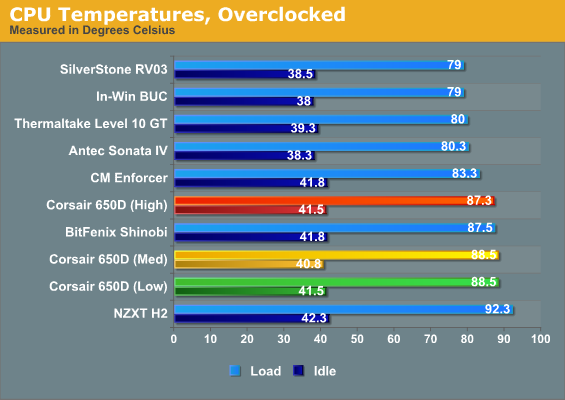
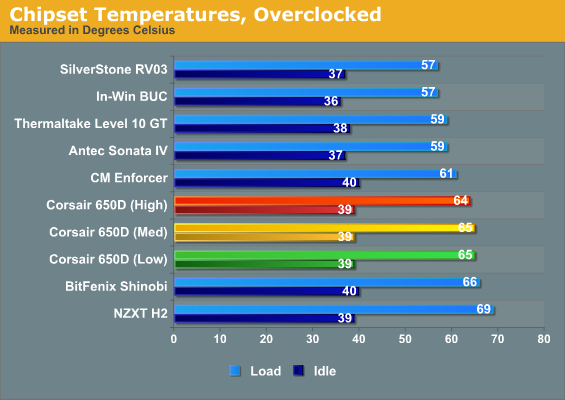
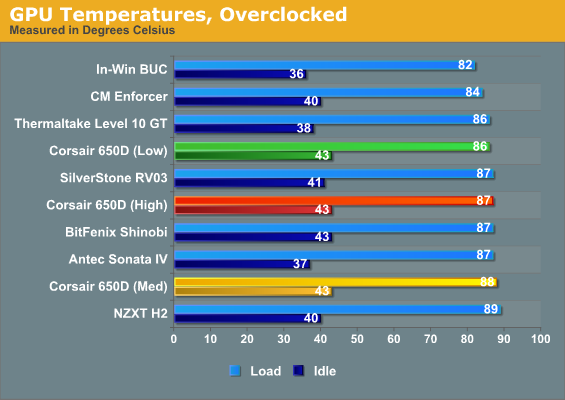
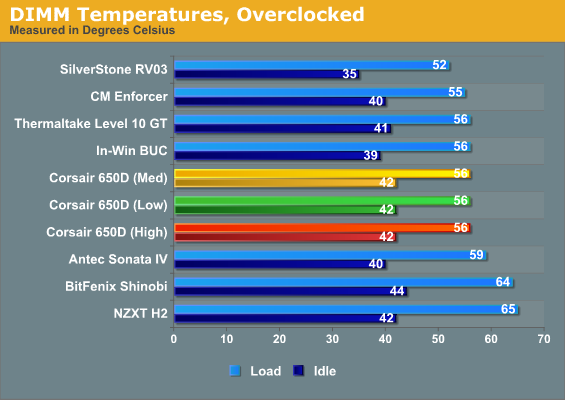
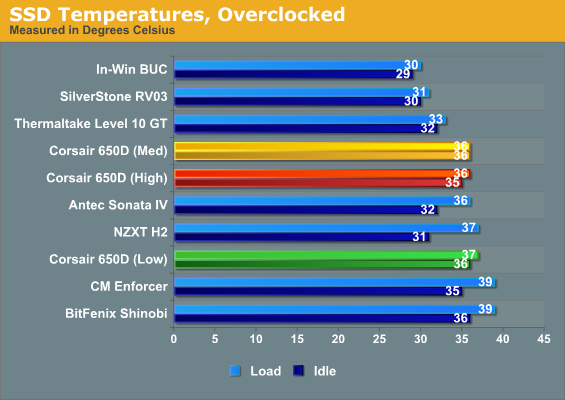
While the 650D's different fan settings once again prove to have negligible differences, the overarching theme continues to be mediocre thermal performance. CPU temperatures are among our worst, with the other heavy duty cases able to produce results as much as eight degrees cooler. This bears out my chief concern: the 650D's negative pressure design just doesn't seem able to keep enough air flowing through the chassis to move the heat off of the processor or the graphics card.
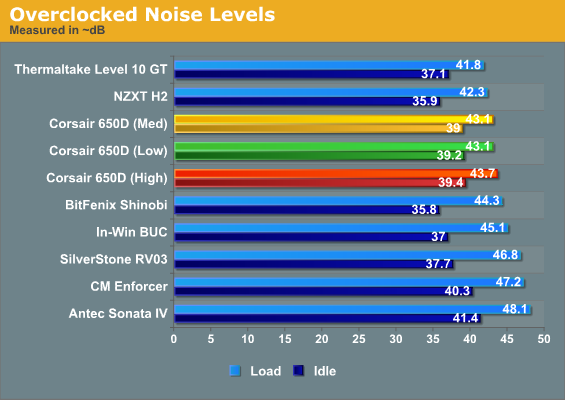
Thankfully, though, Corsair's design still remains among our quietest. Though the different settings measure very similarly, in practice the higher fan settings do create an audible "whoosh." Idle noise isn't great, but it's not terrible either: just about anything under 40dB is livable and easy enough to drown out with white noise.










36 Comments
View All Comments
mscrivo - Wednesday, July 11, 2012 - link
you're crazy if you can't hear the noise. I just bought one of these cases, and 2 days in, its driving me nuts. Its more than audible, especially compared to my old P180B.ooostephen - Saturday, January 14, 2012 - link
same here. i tossed some 'vent filters' used for air conditioners, in the front, and that made a noticeable diff. it also helps keep the dust out.DanNeely - Friday, July 29, 2011 - link
Even if the cooling worked well, this would be a killer for me. It looks ugly, and most mobos are coming with a header now for an internal connection making the kludge obsolete.LtHawkins - Saturday, July 30, 2011 - link
I just built a system and got around this by connecting the USB3 expansion panel that came with my motherboard to the mobo header, then connected the 650D USB3 connector to that, but I'm keeping it all internal - I tucked the panel into one of the external drive bays that I'm not using. Won't work for everyone, but if you have a spare drive bay, theres no reason to have wires come poking out the back of the case.Locklear - Friday, July 29, 2011 - link
Seem to remember Corsair stating that they would release a substitute frontpanel which has usb3 internal header connections instead of the current one. This one will be available on their web-shop. No idea about the timeframe though.darckhart - Friday, July 29, 2011 - link
free replacement? or paid? i hate how some charge you for something that it should have come with in the first place. (i'm looking at you evga and your high flow brackets for the 580s)Locklear - Friday, July 29, 2011 - link
As far as i remember it's not a free replacement, as it's not a defect. The case (and all other cases with usb3 front ports i know of) was designed like this because internal usb3 headers on motherboards were not that common when it was designed, so they opted for a "universal" solution instead.There are ways to work around the problem with things like this http://www.bitfenix.com/global/en/products/accesso...
But I agree.. It's not the ideal solution.
Goty - Friday, July 29, 2011 - link
Solution for negative pressure: simply turn the exhaust fan in the top of the case around. I built a PC for my father in this case and it works just fine.Wieland - Saturday, July 30, 2011 - link
That will get rid of the negative pressure, but it will introduce other airflow problems, inefficiencies.That intake will be right next to the only exhaust so a lot of the air it blows in will go straight back out of the case. This cold air will take up some of the capacity of the exhaust fan and make it less efficient.
The top fan is oriented almost directly opposed to the airflow coming from the front of the case, and the opposing airflows will probably create some dead zones. If you have a big tunneled heatpipe cooler oriented front-to-back (like my Kingston XT-1264), it will push air around and away from it.
With that big open vent on the top and positive air pressure there's bound to be some recycled hot air. The fan filter they removed will now be an absolute necessity to keep out dust.
EJ257 - Thursday, August 11, 2011 - link
I have the HAF932 with a similar fan setup. I really think the big fan on top is a great idea because the heat likes to collect near the top of the case. I turned the back fan around so its acting as an intake too and I haven't had issues with it. So now the airflow is front/back intake, top exhaust.